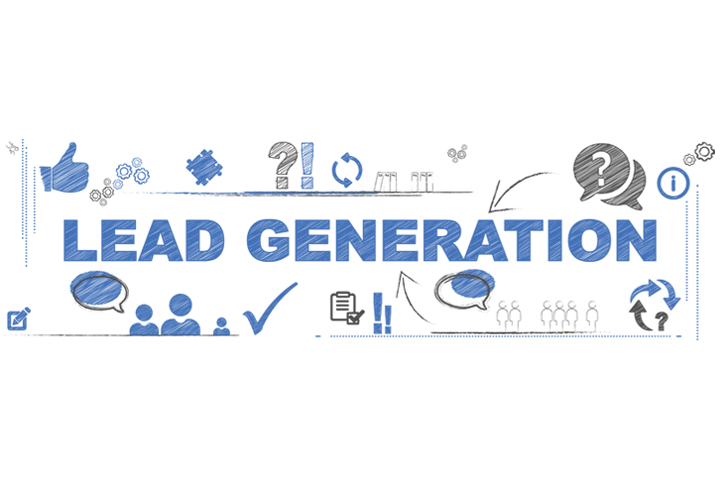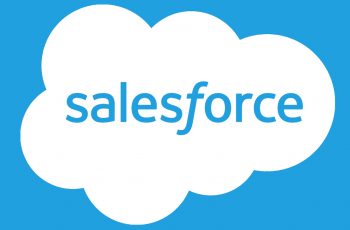Equipment Financing & Leasing Leads, Comparing Lead Gen Channels
The equipment financing and leasing industry is a great study in lead generation channels. Between banks, private lenders and brokers the industry is incredibly competitive and heavily saturated. This makes lead generation a priority, and just like other industries, there are a lot of options out there.
Having personally managed acquisition lead generation for a large financing company in my state I can assure you each lead gen channel has its pros and cons.
Below is some helpful information I learned over the years for you to benefit from. For comparison, I will go from my least favorite to most favorite to give you a sense of direction. Enjoy!
Cold Calling
Let’s just start here, since every sales person, small company and independent broker begins with the art of the cold call. Or, as I like to call it, brute force.
PROS: The great thing about cold calling is you only need some prospects to call and telephone and you are in business. It’s a low barrier to entry and very inexpensive in terms of equipment and technology. However, this is about where the pros end.
CONS: Cold calling may be a simple and affordable way to get started but there are many pitfalls. First, it can take up to 100 cold calls to find a prospect that will answer the phone, be willing to speak with you and be in-market for financing. Not to mention if they are even a fundable prospect.
Quality of the data is also a factor like most channels, but bad information can hurt in this channel especially. It’s great that it won’t cost you much in equipment and technology, but you will make up for that in your time trying to capture lightening in a bottle.
Radio & Television
PROS: Talk about a large potential reach! Radio and television reach millions of people every single day. A captured audience in their cars or homes where you can target them with your message means the message is delivered, even if only half attention is paid.
CONS: The cost of radio and television advertising is astronomical and tracking back to mid and bottom of your pipeline is almost impossible. Intent also isn’t there as this is mainly an awareness play for bigger companies with even bigger budgets.
Social Media
PROS: Social media can be the bane my existence, but there is no denying how many people are logging on and hanging out each day on the various social media platforms. This offers an opportunity for you to get in front of a large audience very quickly, and usually for a less money than some other lead generation channels. This channel also offers some tracking ability depending on where you send a prospect post click, and tractability is very important when it comes to tracking your marketing and lead generation performance.
CONS: Sure, there are a lot of people on social media. They are looking at peoples lunches, concert photos and baby pictures. Sounds like a great time to say hey! You need some financing for your business? In marketing we have a saying, the right message at the right time. I would include, in the right place, and I question if this is the place.
If you have budget to burn and want to see if you can generate leads from social media go for it. At least you can track it through your pipeline if done properly. Otherwise this is more of awareness play where eyeballs will suffice over pure lead generation and return on investment. It also lacks the in-market intent we look for in a lead generation channel.
Direct Mail
PROS: Direct mail may be dying, but it’s not dead just yet. As long as the postal service will deliver a piece of mail there is some opportunity. This channel must be married to quality and accurate lead data to be sure you are hitting the right mail boxes but bulk mail can offer some leverage in reaching out to prospects. It’s another demographic play and with good data and perhaps a post mailer landing page or phone tracking you layer some tracking on top of the program for insights. If you can leverage a trigger for more targeted mailings you may be able to get some intent involved as well.
CONS: This channel certainly qualifies as a shotgun approach and what you mail is as important as who you mail it too so effectiveness can be all over the map. Tracking is difficult even with some phone and digital mixed in here, never providing the complete performance picture. Cost is also an issue, as printing and postage can add up quickly.
SEO
PROS: Cracking the top rankings for a relevant search term with the proper intent can pay huge dividends in the long run, paying out like a annuity. You can match the content to the searchers need via your targeted keywords. Most businesses have a resident expert that can generate original content so it doesn’t always require outside help or a new employee.
CONS: Most mid to large sized financing companies have a department of employees that churn out content every week. Search engine results pages reward large web site conglomerates and directories, further clouding the results. It takes time for content to achieve ranking, and age of content matters. Google changes its algorithm on a regular basis, which can wipe out all your rankings over night. True optimization may also require changes to your web site in addition to your content and that can require a specialist.
Lead Aggregators
PROS: There are two types of models within this segment. The Buyerzone model, where you can buy leads for a low cost, and the Lendio model, where they provide leads to direct lenders for free and charge a commission on funded deals. Leads are generally inexpensive and in abundant supply, and you can put requirements the prospect must meet before you purchase the lead. You can also track these leads through your entire pipeline to track performance. Plus, they always have more, meaning you can attempt to scale by purchasing more leads.
CONS: In the Buyerzone model these companies sell the leads multiple times. If the prospect submitted their information at more than one of these sites, they can be sold upwards of ten or more times, creating a confusing and frustrating experience for the prospect, and a highly competitive selling situation. I’ve even experienced prospects that thought they sent us an application when in reality they sent it to someone else. In the Lendio model, Lendio ultimately decides which funding proposal the prospect sees based in part on which lender is offering them the biggest commission. If this isn’t you, your offer may never make it to the prospect, even if it is the better deal.
PROS: Email has become much less of the wild west in the last five years. Service providers better restrict who you can mail to and what makes it into an inbox versus junk or spam. This channel works best when you have a home grown list of interested users and triggers that allow you to email with a purpose. For example, emailing a user that visits your site and exists in your database that doesn’t call or submit a form but spent a good deal of time looking at multiple pages. Email is also very tractable, providing solid insight into what is happening throughout the funnel. If you can organically grow a large database you can generate some consistent lead flow as a result.
CONS: Although service providers have gotten better, they aren’t perfect. With so many financing companies and agents out there competition is fierce, spamming is an issue and over mailing can exhaust your list unless you can grow it faster than your attrition rate. The better uses of email that get away from just mass mailing take a level of technology, people and infrastructure that smaller companies probably can’t afford. Plus, people are tuning out email more and more after years of emails showing up in their inbox and intent isn’t there unless done properly.
Search Engines (A.K.A PPC, Pay Per Click, Paid Search Marketing & Search Engine Marketing)
PROS: Tractable, repeatable and ROI positive. These three attributes are the holy grail of marketing. You can target in-market-now prospects based on intent and in some cases what they are searching for, right at the moment they are indicating they need it. You can control your messaging yet change it quickly, get to market quickly and control your spend. This means financing companies of all sizes can compete. It’s tractable from every penny you spend to every penny you make. And it’s repeatable, providing a solid lever you can pull year after year to grow your business.
CONS: By far my favorite channel, but it’s not without a downside. You need a skilled professional that understands both the financing world and how to use the paid search marketing tools. There are up front costs to get everything set up and running. And you need a budget to fund the advertising spend.
*To be clear, we are talking about search marketing, not display or banner marketing.
So there it is. A first person experience with lead generation for equipment financing & leasing companies. If you’d like some help generating leads for your equipment financing company, by all means reach out using our contact form!
A Note About Triggers and Automation
Many channels can move more toward an intent based marketing and lead generation play if you can implement triggers and automation.
For example, UCC filings were used for call and direct mail campaigns. Web site visitors can be targeted based off behavior if their contact information is in your database. Email openers can be targeted for an immediate phone call for a live contact campaign.
Find the triggers that can help you identify when a user is easily contactable or in-market-now for a better chance at generating that lead.
This is the tip of the iceberg when thinking about lead generation and lead nurturing for your equipment financing or leasing company. If you are interested in learning more about this powerful lead generation mechanism, contact us to set up a free consultation today.
Want to learn more about how we can help you generate more sales via paid search marketing? Visit our paid search marketing services page.





